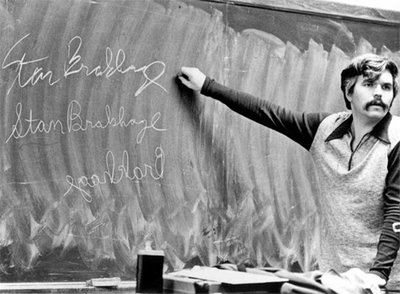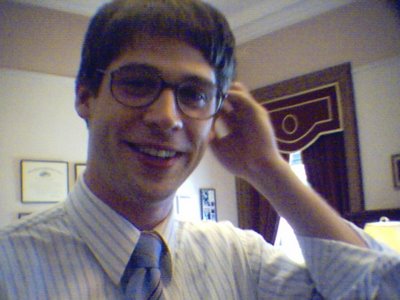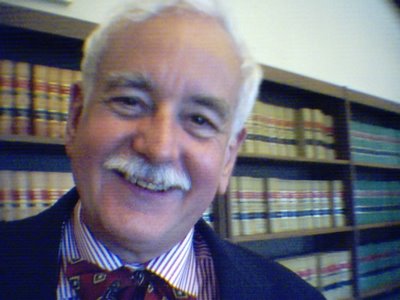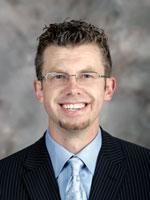Carrie and I arrived in Alaska on August 1 or so. I haven't posted any photos since we arrived. But I've taken plenty. The following show the end of an Alaskan summer shading into autumn, and the onset of winter. Most were taken on a
Samsung Digimax i5. But a few were taken on a
Mattel Vidster.
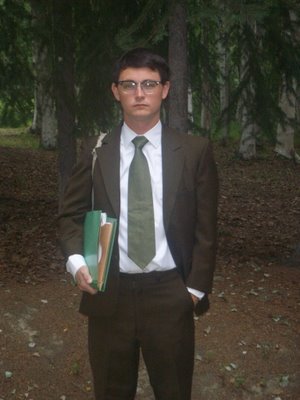
On August 1, Carrie and I moved to Fairbanks, Alaska, because I'm working for Judge Kleinfeld of the 9th Circuit. Our first couple of weeks we lived with my relatives Barbara & Jim Philleo on Chena Ridge. Here you see me on my first day of work, out front of Barbara and Jim's place. It's jacket and tie in Judge Kleinfeld's chambers. We keep things smart here in Alaska. I picked up this number at the Thrift Town in Olympia. It's polyester, but I like it. Couple of days later we moved in to a place 4 doors down on the left.

Summer in Alaska is very green, trees as far as you can see. The birch trees behind Barbara and Jim's place are lovely, as you can see.
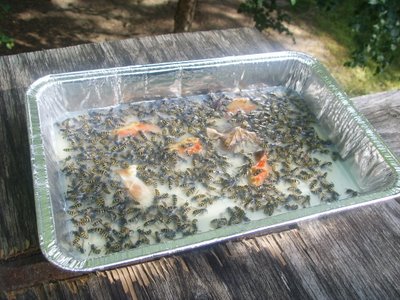
Unfortunately, bugs love Alaska as much as people do. Maybe more so. And in August, the most troublesome were the yellowjackets. Which everyone called "bees." Jim caught 'em with salmon chunks in soapy water. Seemed to work pretty good.

While the weather was nice, Carrie & I visited Barbara & Jim's log cabin at Chena Hot Springs. They built it themselves years ago, with some help from friends. It's truly lovely, with a big cast-iron stove for cooking and another for heat, and a loft for the bed, and gaslamps scattered all about for light. More recently, Jim installed a screened deck.
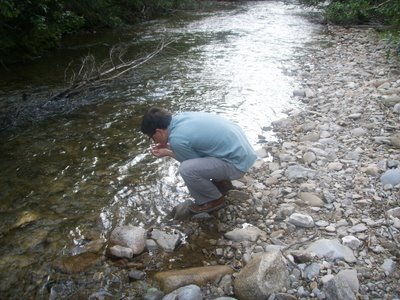
The creek out back provides a convenient source of clear, sweet water. There's a red bucket for the fresh, and white buckets for the grey.
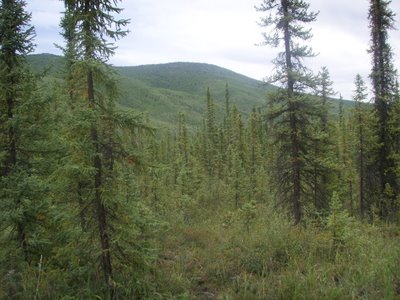
While Carrie napped, I took a little walk in the foothills behind the hot springs.
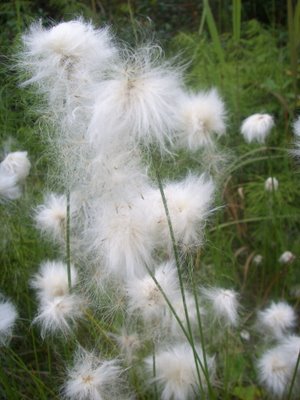
On my first walk in the Alaskan countryside, I noticed many unfamiliar plants. These cottonlike blossoms were lovely.

But most notable were the fields of wild blueberries. They're tiny, with a wonderfully peculiar tartness. I suspect I'll never be able to enjoy blueberries from the store again. It was all I could do not to eat every one as I picked it.

Still, I managed to save a few for Carrie, in the only container I had available. I can't recommend my method, as it makes for quite a mess. Blueberries are fragile and colorful. By the time I got to the bottom of the hill, my shirt was colorful and the berries were bruised. Bring a bucket, I think. A couple weeks later we collected a gallon or two with Jim and Shari, and Carrie made the best blueberry pie I think I'll ever taste.
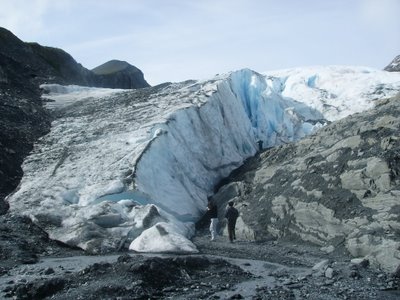
Before winter hit, Carrie and I drove down to Valdez, reputedly among the most beautiful places in Alaska. I guess I have to reserve judgment on that until I see the rest of them. But Valdez was pretty damn impressive. On the way, we stopped to visit a glacier, just before Richardson Pass.
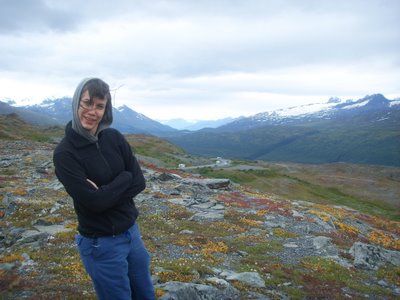
The pass is pretty impressive. The wildflowers paint the mountain and the wind blows high even in the summer. I understand the pass gets 50 feet or more of snow every year. We won't be driving this way again until it melts.
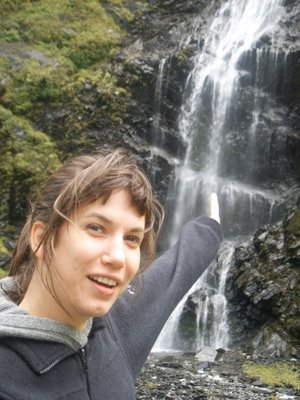
The drive to Valdez was longer than we expected. But lovely the whole way. Especially here, just before you hit the ocean. Rock walls rise on either side of the road, and waterfalls spill down both sides. I understand the waterfalls are just as lovely frozen.
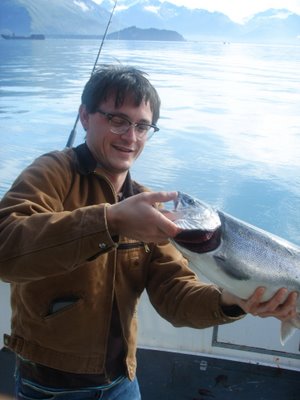
In Valdez, we went salmon fishing. It was coho or "silver" salmon season. The limit was 6. And everyone on the boat hit the limit in about an hour and a half. There were more fish than I'd ever seen in my life. The beaches were littered with their bodies. Literally carpeted. Tiptoeing along the sound, I felt like I was walking through a display case at Russ & Daughters.
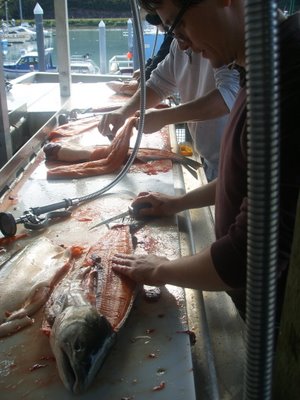
In any case, we had 12 fish to prepare for the drive home. I tried filleting a few, but did such an execrable job we decided to enlist a professional. He carved the fish so beautifully, I was embarrassed. Such a beautiful fish deserves a proper butcher, not a hack like me.
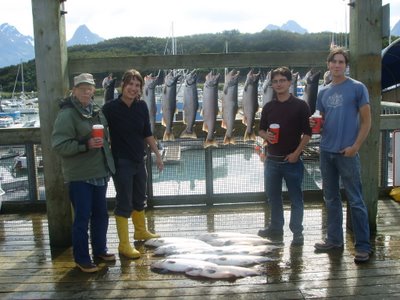
Not a bad catch, I think. Here you see me and Carrie and Patrick and his grandpa, our boatmates. It was a good trip.

A few weeks later, it was time for Barbara and Jim to shore up the cabin's woodshed for the summer. So Carrie and I drove out to held them. In Alaska, you can use fallen trees for firewood, so Jim cut a couple trees along the highway to length, and we carried them up to the truck. Logs are heavier than they look.
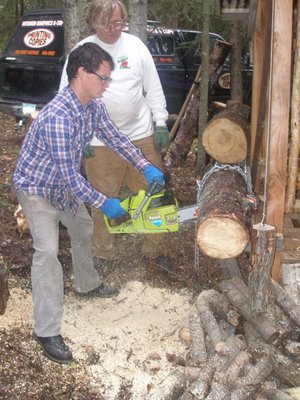
Best part was, Jim taught me how to use a chainsaw. I was a bit terrified. But after a few cuts, it was just another tool. A pretty scary tool. But still. I cut up a tree.
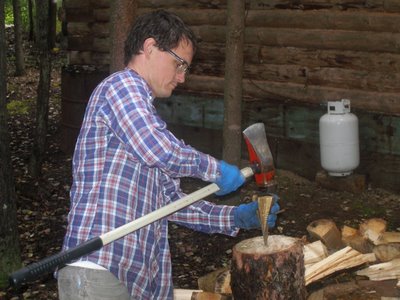
Of course, you've got to make the pieces small for the stove. So Jim showed me how to split up the sections as well. Tap in the splitter, then swing hard.
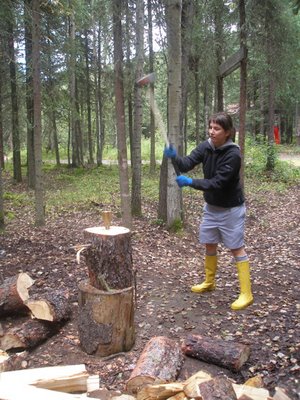
Carrie got some swings in too. It was a blast. Even if I did get a Mark Twain feeling. Especially the next morning, with blisters galore.
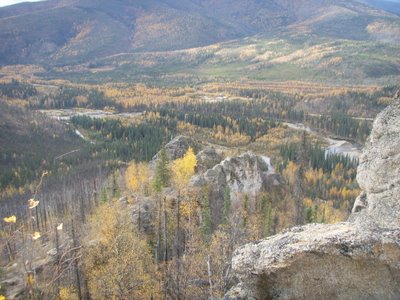
Soon afterward, Carrie's mother visited. We all went out to Angel Rocks, near Chena Hot Springs, for a walk. Here's a look down the valley.
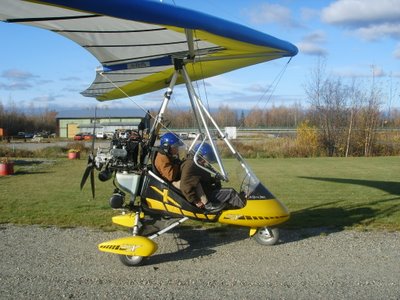
Just before the snow started falling, just after yom kippur, Jason Weiner, the president of the Tanana Valley Bar Association, offered to take us up in his ultralight airplane. I'd never seen one before. Essentially, its a propeller slung under a wing. But it was really exciting.

Jason and I went up for about an hour, over the Fort Knox gold mine and so on. I shot a roll of movie film on the Kodak K100 you see in my left hand.
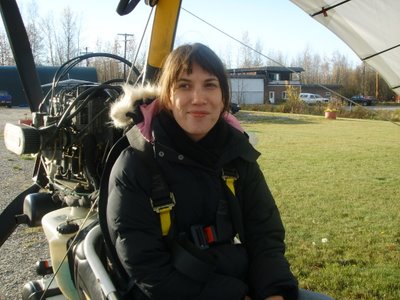
So Carrie went up too. Not without a bit of trepidation. But she really loved it.
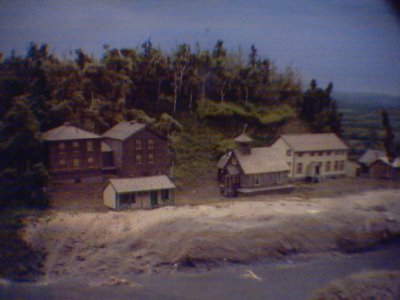
Just before Alaskaland, or properly "Pioneer Park," Fairbanks's main tourist attraction closed, we visited. My favorite bit? The diorama villages in the steamboat. Here's a still of one of the diorama's shot on my Vidster. They're really lovely. Especially because they're reconstructed by asking former residents what the villages looked like 50 years ago. Most of them don't exist anymore, except in memory.
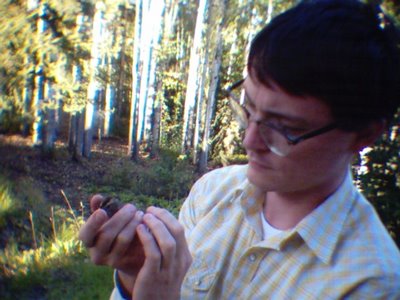
Vidster as well. Odd thing, birds fly into our windows real regular. This little one did. And we thought it was dead. But I warmed it up. And it flew off, eventually.
 So now she uses a broom
So now she uses a broom






























